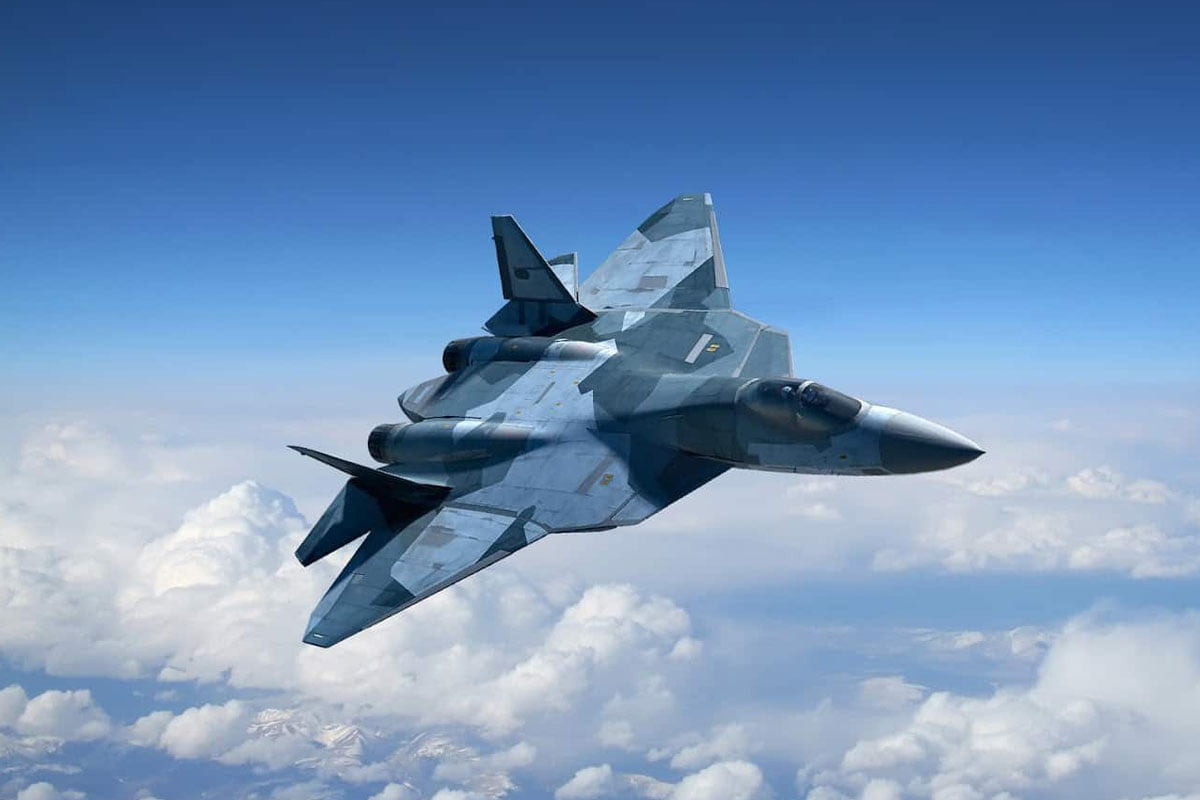Russia’s much-hyped MiG-41 is claimed to be a fighter jet that is hypersonic-weapons capable, manned and unmanned, capable of hitting Mach 5 speeds. It carries anti-satellite missiles near the boundary of the earth’s atmosphere. But, it is likely to remain a fantasy.
This is the argument of US experts, as Russia claims that the 6th generation fighter interceptor could make its maiden flight by 2024-25.
While details about the aircraft’s capabilities are sketchy, the US experts feel that the jet talks of technological concepts that do not exist. In 2018, Mikoyan Director-General Ilya Tarasenko said the MiG-41 was entering the “experimental design stage.”
A Russian TASS news agency report of 2018 said the Ministry of Defense wanted to develop a “long-range interception aircraft” to replace its aging MiG-31 fighter jets, relics of the Cold War.
“PAK DP (the official terminology of MiG-41) is Russia’s fake attempt to trick the world into thinking it can make an NGAD like the US or maybe China. It likely can’t,” Peter Suciu, a military expert, wrote in the National Interest.
Revealed in 2018, the MiG-41 was slated to take its maiden flight in 2024-25 and enter service by 2028. This is ambitious, considering Russia has struggled to keep up with the production of the Sukhoi Su-57 in significant numbers.
“It is difficult to foresee a scenario in which the MiG-41 emerges from hype and propaganda shortly. Russia already has its hands full with the Su-57, of which few have been built and deployed.
“The Su-75 is looking for an international partner or buyer to fund its future development,” Dr. Brent M. Eastwood, the author of Humans, Machines, and Data: Future Trends in Warfare, wrote in the National Interest. He is an Emerging Threats expert and former US Army Infantry officer.
“The Russian aerospace industrial base is just stretched too thin to give the MiG-41 the kind of attention that it needs to make it from concept to prototype to serial production. The program assumes a level of technological advancement that does not exist,” opined Dr. Eastwood.
The aircraft’s developers have asserted that the MiG-41 will go hypersonic with speeds ranging from Mach 4 to 4.5. The aircraft will be able to launch small satellites in lower earth orbits and will be armed with anti-satellite missiles.
Meant to leap a generation, the Mig-41 is expected to be a 6th generation of aircraft. Given the lack of human capability to endure overloads of up to 9g, provision has been for unmanned operations.
Earlier, Izvestia newspaper claimed that MiG-41 could even intercept hypersonic missiles by carrying a multifunctional long-range interceptor missile system that will dispense several sub-missiles in order to increase the chance of intercepting hypersonic weapons.
The paper goes on to explain the concept – “after a hypersonic projectile is detected by Russia’s ground radars or early warning network, the MiG-41 will launch the interceptor missile at long range. That missile will split off into smaller sub-missiles, which will then attack the projectile “head-on.”
MiG-41: A Whimsical Flying Elephant?
Aviation enthusiasts are keen to see how the new fighter jet will resolve the problem of achieving near-hypersonic speeds with enough stealth. It is documented that the conventional stealth coating tends to deteriorate rapidly at hypersonic speeds, making it visible on the radar. The repairs to restore the stealth capabilities would be expensive.
The other requirements would be specialized designs for the airframe and canopy to withstand high speed. “It would need to withstand amazing levels of heat using specialized materials when flying above Mach 4 at such a high altitude. If it could approach the performance of the SR-71 Blackbird, it would need ample maintenance to keep it in the air,” the analysis reads.
The high speeds of Mach 4 and 5 would require the fighter to have specialized weapons, likely hypersonic missiles, that can be air-launched from the MiG-41. The weapon capability of the jet is not yet precise.
“Moreover, most weapons would be useless – and there are already reports of aircraft flying so fast they flew into the ordnance they tried to fire. A fighter that can fly fast lacks endurance as it burns its load too quickly and can’t fight. It isn’t a fighter at all,” Suciu said bluntly.
He adds: “To be blunt, those claims seem more than a little dubious. So, forgive us for suggesting this is Russian hyperbole with little or no basis. Achieving high speed requires more than a ramjet or turbo ramjet engine.”
Sustained supersonic flight requires lots of fuel, and carrying tons of it adds weight. Moreover, flying at Mach 4 produces an unfathomable amount of heat, and extreme temperatures caused by air friction require a new-age material that repels heat while retaining any stealth coating.

Then there is the trade-off between high speeds and maneuverability, which the experts suggest are “mutually exclusive.” The aircraft can fly fast, but it will guzzle fuel at an unprecedented rate if maneuvered.
“The MiG-41 would need to store significant fuel at such high speeds. This would require aerial refueling and limiting the range of the fighter. The heat from the exhaust could also increase its radar signature, keeping it from being as stealthy as Russia has claimed,” Dr. Eastwood contended.
Also, it is doubtful if the Kremlin has the wherewithal to carry out serial production of the fighter jet, even if it succeeds in building a prototype, as its resources are already tied up in the ongoing Ukraine war.
Unable to foresee Russia throwing Rubles at this “overhyped” project, experts conclude that the aspirational project will likely remain mythical for times to come.
- Ritu Sharma has been a journalist for over a decade, writing on defense, foreign affairs, and nuclear technology.
- She can be reached at ritu.sharma (at) mail.com
- Follow EurAsian Times on Google News